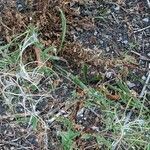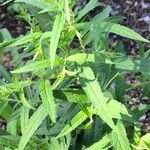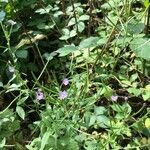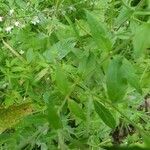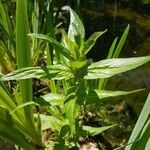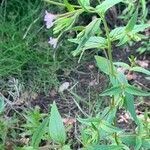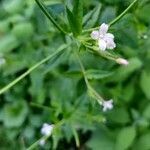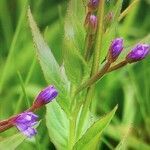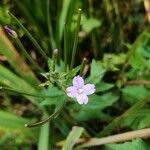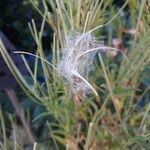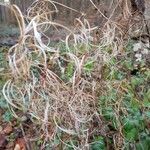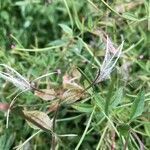Erect herb 15-200 cm tall, increasing by leafy rosettes near the base of the thick, hollow stem; stems strigillose only along the elevated lines decurrent from the margins of the petioles. Lvs mostly opposite (the uppermost alternate), deep green, glabrous, (1)-2-9 × 0.7-3 cm, lanceolate, serrulate with 20-30 teeth each side; base rounded or obtuse, apex acuminate; petiole 1-2 mm long. Infl. nodding, strigillose and with glandular hairs. Fls erect. Ovary 0.8-2.5 cm long, hairy, sometimes densely so. Floral tube 0.5-1.4 mm deep, with a conspicuous ring of long hairs inside. Sepals keeled, 2-4 × 1-1.2 mm. Petals rose-purple, 3.5-5.5 × 2.2-3.2 mm. Filaments of the longer stamens 1.4-3 mm long. Style white, 1.5-3 mm long, glabrous; stigma clavate, 1.2-2 mm high. Capsules hairy, 4.5-8.5 cm long; fruiting pedicel 0.3-1 cm long. Seeds 0.8-1.2 × 0.3-0.45 mm, narrowly obovoid; abaxial surface with conspicuous lines of papillae; terminal end with an evident pellucid beak formed from the coalesced bases of the coma.
Perennating by persistent basal rosettes, without turions or long rhizomes; stems erect, mostly solitary, freely branched when well developed, to 1 or even 1.5 m, puberulent at least above, usually in decurrent lines, sometimes even sericeous, and often also glandular in the infl; lvs opposite, or the upper offset or alternate, lanceolate or lance-ovate, mostly 3–12 × 0.5–3.5 cm, serrulate, the teeth somewhat remote (usually 2–5 per cm of margin) or small and obscure; fls numerous; sep 2–6 mm, not projecting in bud; pet 2–6 mm, white (pink), notched; fr 4–10 cm, on a ± evident pedicel 2–15+ mm; seeds numerous, ca 1 mm, broadly short-beaked, longitudinally finely ribbed (evidently so at 20×); coma nearly white; 2n=36. Wet places, often in unstable habitats, variable and often somewhat weedy; Nf. and Lab. to Alas., s. to Va., w. N.C., Ind., Io., Calif., Tex., Mex., and C. Amer.; Chile and Arg. June–Aug. Ours is the widespread var. ciliatum. (E. adenocaulon; E. americanum; E. perplexans)
Erect perennial (occasionally annual) to c. 2 m high, with leafy shoots developing from the base. Stems with a rather close pubescence of irregularly curved hairs, restricted to raised lines decurrent from leaf bases, and often numerous glandular hairs, especially in the flowering region. Leaves usually opposite, alternate in upper part of the stem, lanceolate, 2.5–8 cm long, with numerous very shallow teeth, the apex tapering or acuminate, the base broad and rounded. Flowers with a conspicuous ring of long hairs inside hypanthium. Petals 3.5–5.5 mm long, purplish pink or white. Capsule 4.5–8.5 cm long, with a close partly glandular pubescence; pedicel 0.3–1 cm long. Seeds very narrowly obovoid, 0.9–1.2 mm long, the surface with obvious lines of laterally flattened papillae.
